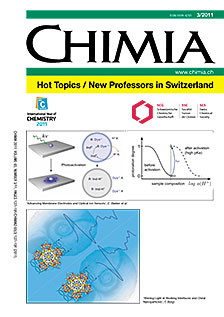Membranes for Specific Adsorption: Immobilizing Molecularly Imprinted Polymer Microspheres using Electrospun Nanofibers
FH-HES
DOI:
https://doi.org/10.2533/chimia.2011.182Keywords:
Electrospinning, Filtration, Molecularly imprinted polymer, Precipitation polymerization, Raman microscopyAbstract
Molecularly imprinted polymer microspheres were immobilized within a polymer nanofiber membrane by electrospinning. Such membranes simplify the handling of functional microspheres and provide specific recognition capabilities for solid-phase extraction and filtration applications. In this study, microspheres were prepared by precipitation polymerization of methacrylic acid and divinylbenzene as a cross-linker with the target molecule (?)-cinchonidine and then, they were electrospun into a non-woven polyacrylonitrile nanofiber membrane. The composite membrane showed specific affinity for (?)-cinchonidine which was attributed to the functional microspheres as confirmed by Raman microscopy. The target molecule capturing capacity of the composite membrane was 5 mg/g or 25 mg/g immobilized functional microsphere. No difference in target affinity was observed between the immobilized microspheres and the free microspheres. These results reveal that electrospun composite membranes are a feasible approach to immobilizing functional microspheres.Downloads
Published
2011-03-30
Issue
Section
Columns, Conference Reports
Categories
License
Copyright (c) 2011 Swiss Chemical Society

This work is licensed under a Creative Commons Attribution-NonCommercial 4.0 International License.
How to Cite
[1]
R. Büttiker, J. Ebert, C. Hinderling, C. Adlhart, Chimia 2011, 65, 182, DOI: 10.2533/chimia.2011.182.







